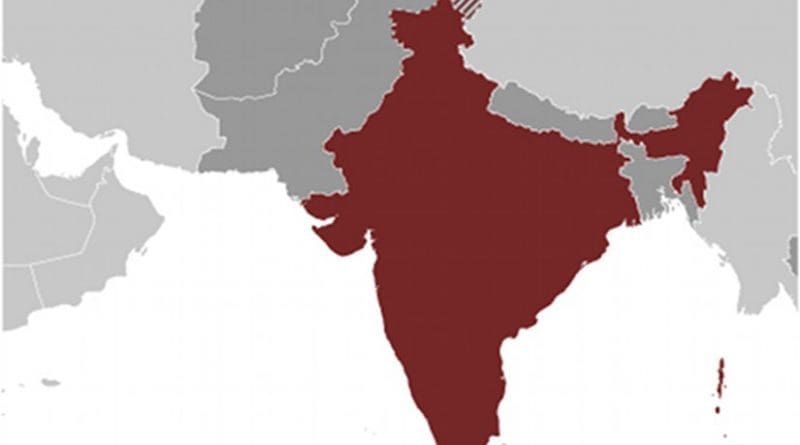Baptism Of Fire For India’s Home Minister – Analysis
Less than 24 hours after taking over as India’s Minister for Home Affairs, Sushil Kumar Sambhajirao Shinde last Thursday had to address media regarding the four low-intensity blasts that had rocked Pune a day earlier.
Given that his last exposure to the law and order apparatus ended in 1971, when he resigned as a police sub-inspector to join politics, it perhaps wasn’t surprising that Shinde has since been accused of seeming out of his depth. However, this doesn’t answer the questions of what type of a home minister will he make and what will his outlook be on internal security?
There is scant information available to throw any light on the thinking of India’s new home minister on issues such as terrorism, insurgency or left-wing extremism. This is perhaps to do with the fact that prior to becoming minister of power, his most recent role, Shinde had not held a constitutional post for very long.
As Andhra Pradesh governor he lasted less than 15 months and as chief minister of the state of Maharashtra, less than two years, between 2003 and 2004. Since 2006, he has served as minister of power in New Delhi.
On the basis of his performance in past roles, Shinde may not have been the best candidate for this high-profile job. During his 21 months as Maharashtra chief minister, the state capital Mumbai witnessed five explosions carried out by terrorists within seven months.
His performance as minister of power was also marred by events since. His elevation to the home ministry came the day India experienced its worst-ever electricity blackout, affecting 20 states and 600 million people. A day earlier, on July 30, another blackout had shutdown northern Indian states including New Delhi for several hours. Not surprisingly, within a day of his appointment, the media were already questioning the rationale behind the decision, terming the appointment as a reward for his proximity to Sonia Gandhi, the chairperson of the Congress party.
Shinde’s immediate tasks include a range of internal security challenges in the context of its gigantic project of to erect a counter-terror architecture, a task left unfinished by P Chidambaram. Shinde has been compared, albeit unfairly, with Chidambaram’s predecessor Shivraj Patil, another politician from Maharashtra.
The 2008 Mumbai terrorist attack ended Patil’s lacklustre tenure as home minister. Prior to that, Patil had been criticized for being too soft on tackling terror, especially with regard to left-wing extremism. He not only had the proclivity to term the Maoist extremists as “estranged brothers and sisters”, but repeatedly played down the threat, even at a time when Prime Minister Manmohan Singh had referred to the insurgency as the country’s “single biggest internal security challenge”.
Chidambaram’s tenure was a mixed bag. Terrorism related incidents decreased significantly in all of India’s conflict theatres – Jammu & Kashmir, the northeast, left-wing extremism affected states and also attacks targeting urban centers.
He was instrumental in activating the Multi-Agency Centre system for coordinating intelligence inputs from the field, setting up the National Investigation Agency, monitoring the police modernization programmes, overseeing the raising of new battalions of central police forces and also leading a less ambiguous war on left-wing extremism.
Besides, Chidambaram brought abut radical changes in the way the ministry functioned. He ensured mandatory arrival time for the ministry employees by installing smart card swiping machines at the building, much to the angst of employees used to lots of leeway and freedom regarding office hours. He also made the ministry’s achievements transparent by introducing a system of presenting monthly report cards and also ensuring timely release of annual reports.
Under his patronage, chief ministers of different states met annually every year in New Delhi to take stock of the internal security situation. In contrast to his predecessor, Chidambaram was much more willing to share and discuss his outlook with the media, a tendency which was termed far too open for a closely guarded bureaucracy-led ministry and brought him some brickbats as well.
However, his gains were interspersed with several failures. His pet project, the National Intelligence Grid remained mired in bureaucratic and inter-ministerial tangles. His objective of setting up a National Counter Terrorism Centre, never came to fruition amid objections from several state governments fearing encroachment on the principles of federalism. His multi-theater war on left-wing extremism, termed Operation Green Hunt, achieved little and in spite of the setbacks, the Maoists continued to remains a serious internal security threat across several states. Ill-motivated and inadequately briefed security forces were recently involved in a failed encounter resulting in the deaths of civilians.
It is in the backdrop of such successes and failures that Shinde’s performance would be judged. Pune serves as a point of reckoning for him that the position of the home minister is not a job for the frail hearted. He will be keenly watched on the parameters of activism, transparency and more importantly, on his ability to deliver on the unfinished agenda.
This article appeared at Asia Times and is reprinted with permission

